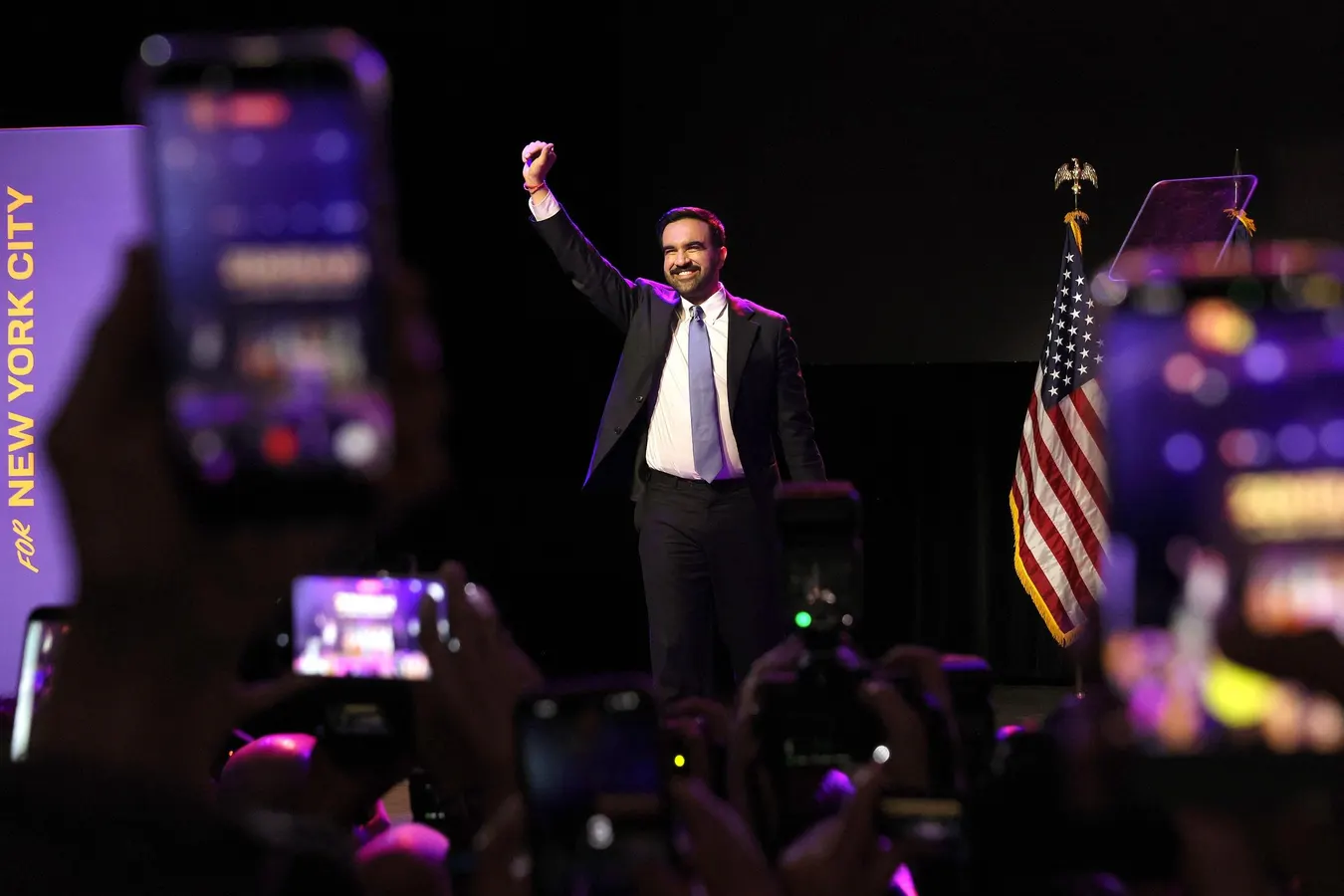Copyright Forbes

What would be the real result of a new millionaire tax in New York City–the kind that Mayor-elect Zohran Mamdani wants to impose? In June, after Mamdani, a self-described Democratic Socialist, won the Democratic primary, billionaire Bill Ackman, founder and CEO of Pershing Square Capital Management, suggested the answer is that wealthy taxpayers will flee. But Ackman had a more conciliatory tone following Mamdani’s landslide win in the general election on Tuesday. In his June 25 post on X (formerly Twitter), Ackman declared: “New York City under Mamdani is about to become much more dangerous and economically unviable.” The then 33-year-old (now 34-year-old) member of the New York State Assembly, had just garnered 44% of the primary vote running on a progressive agenda focused on making life in New York City more affordable. But after Mamdani received more than 50% of the vote in the general mayoral election, beatingr New York Governor Andrew Cuomo (with his long list of billionaire backers) by nearly nine percentage points, Ackman offered his congratulations on X, adding, “Now you have a big responsibility. If I can help NYC, just let me know what I can do.” He followed up on Wednesday, noting, “Mamdani won a decisive election. He is going to be our mayor for the next four years,” while confirming, “While I did not support Mamdani for mayor and have concerns about the unintended and negative consequences of his policies, I want to do everything I can to help NYC regardless of who are mayor is.” It was a decidedly different response from earlier in the campaign—and one shared by many billionaires who call New York City home and helped debunk rumors that a Mamdani win would necessarily result in a mass exodus. But then, just yesterday, the volatile Ackman shifted his tone yet again, retweeting as “an accurate prognosis” a post predicting that the rich will flee and “People who voted for this will eventually feel the pain but they won’t blame the policies or the politicians, they’ll blame the rich for leaving.” Mamdani’s Millionaire Tax Plan What is generally agreed upon is that funding Mamdani’s agenda will take money—and Mamdani has a plan to raise revenues without tapping the middle class. In addition to bumping up the corporate tax, Mamdani has proposed a 2% tax on what his campaign calls “the wealthiest 1% of New Yorkers—those earning above $1 million annually.” His platform estimates this “millionaire tax” will raise $4 billion annually to help fund projects like universal free early childcare, free bus rides and more affordable housing. The numbers, Mamdani says, mean that the tax would impact about 34,000 households. “This tiny share of the city population,” he said on his campaign website, “takes home 35 percent of all income earned by New York City residents.” That same 1%, he explains, also benefited from a tax cut under President Trump’s 2017 Tax Cuts and Jobs Act (TCJA) which cut the top marginal rate from 39.6% to 37%. (It’s worth noting that the TCJA reduced the rates in almost all brackets, from 10%, 15%, 25%, 28%, 33%, 35%, and 39.6% to 10%, 12%, 22%, 24%, 32%, 35%, and 37%, respectively, and those lower rates were retained under the One Big Beautiful Bill Act that Trump signed this past July 4th.) The proposed surtax—the 2% extra tax rate would only apply to earnings over $1 million—would, Mamdani suggests, make New York’s tax more progressive. The federal income tax system, he points out, is progressive. With a progressive tax, rates go up as income increases, but everyone pays the same rate for the same income. That means that you pay the same 10% as every other person until you hit the top of the bracket—then you pay 15% on that income until you hit the top of that bracket, and so on. New York state has a similar system, with rates ranging from 4% to 10.9% for the 2024 tax year. However, Mamdani claims that the New York City income tax is essentially a flat tax of 3.9%. “Whether you make $50,000 or $5 million,” Mamdani explained on his website, “you pay practically the same tax rate.” That’s true—sort of. New York City’s tax rates start at 3.078% and only climb to 3.876%, a small uptick. In addition, the brackets are somewhat compressed, climbing quickly at lower rates, and then leveling off once taxable income exceeds $50,000. But that still doesn’t qualify as a pure flat tax. (New York City’s income tax was a flat 2% when it began in 1966.) Under Mamdani’s plan, the tax would be tacked on at the top, taking an additional 2% of incomes over $1 million, making the tax more progressive. Will It Work? Mamdani says the plan will work, pointing to millionaire taxes in states like Massachusetts. In November 2022, Massachusetts voters approved the Fair Share Amendment, a 4% surtax on personal income exceeding $1 million. The tax raised $1.8 billion in its first three quarters of collections, with revenues funding school lunches, transportation, and education. Some feared that the tax might cause ultra-wealthy residents to flee. While Massachusetts residents did leave the state in 2021, the year the bill passed, most were upper-middle-class taxpayers, not millionaires. That’s consistent with historical data. Massachusetts has been losing individuals across all income levels since 2009, with more concentrated losses among middle- and high-income earners. One reason may be housing costs—as those shot up, lower-cost housing in other states, combined with remote work opportunities, may have wooed middle-class residents away from the Bay State. As for those millionaires? An analysis of data from the IRS’s Statistics of Income program revealed that the number of tax returns that reported an adjusted gross income (AGI) of a million dollars or more in Massachusetts grew by 36% between 2018 and 2022 (tax stats from the IRS for 2023 were not available at the time of the report). Wealth data from Wealth X also indicated that the number of millionaires in Massachusetts rose by 38.6% between 2022 and 2024, while their collective wealth increased from $1.6 trillion to $2.2 trillion. The success of that tax has encouraged other states to consider similar moves. In Illinois, a bill proposing a 3% surcharge on incomes over $1 million is currently under consideration after voters approved the measure in November 2024; however, the change would require approval from the legislature and that hasn’t yet happened. In Hawaii, some lawmakers are also targeting the ultra-wealthy—a proposed 1% wealth tax on assets above $20 million is slated for review by the legislature. The measure survived a committee vote but hasn’t yet gotten a stamp of approval from the legislature. In Maryland, Governor Wes Moore, a Democrat, had proposed increasing the top tax bracket to 6.5% for taxpayers earning over $1 million in order to lower taxes for low- and middle-income taxpayers. That measure was approved–sort of. As of July 1, 2025, the Old Line State has two new tax brackets for high-income earners. Even states that don’t have a personal income tax are getting into the game. In 2022, Washington began taxing capital gains at the state level, targeting capital gains over $250,000. As of January 1, 2025, an additional 2.9% surtax applies to net gains above $1 million, pushing the top capital gains tax rate to 9.9%. The tax was thought to be a factor in the state’s richest man, Amazon founder and CEO Jeff Bezos, relocating to Florida. However, Bezos, the third richest man in the world according to Forbes Real Time Billionaires List, with an estimated worth of $254.7 billion, claimed in a 2023 Instagram post that he moved to be closer to both family and Blue Origin operations in Florida. That squares with a 2016 review of IRS data that found that only 0.3% of millionaires move across state lines each year, lower than the general population’s mobility rate. The study, which looked at 45 million tax records, suggested that most millionaires simply absorb the cost or hire great tax planners to help reduce their tax bills. (The same paper noted an outlier in top soccer players moving away from teams in high-tax countries—sports figures are often highlighted as examples of tax flight. However, the authors found that athletes are not representative of top income-earners in general, and are “probably an especially mobile segment of elite earners” due to their occupation.) That doesn’t mean that all states are equally enthusiastic about raising taxes at the top. In 2013, North Carolina replaced its graduated income tax with a top rate of 7.75% with a flat tax of 4.5%, while voters in California rejected a surtax on millionaires in 2022. In both cases, those opposed to increasing tax rates cited concerns about retaining rich taxpayers within their borders. Will Mamdani’s Millionaire Tax Pass? That’s difficult to say. Despite Mamdani’s enthusiasm for—and arguably, that of his supporters—for taxing the rich more, New York City residents don’t get the last word on this issue. Income tax rates are set by the state, which means that Gov. Kathy Hochul, a Democrat, would have to sign off on a bill that is passed by the state legislature. In June, Hochul rejected the plan, saying, “I don’t want to lose any more people to Palm Beach. We’ve lost enough. We had a major out-migration when Republicans in Congress eliminated the state local tax deduction…Driving them to Florida does not help us, so let’s be smart about this.” (She made her comment before Trump’s July tax bill temporarily increased the deduction for state and local taxes from $10,000 to $40,000–but also phased down that deduction for those with modified adjusted gross income above $500,000.) Still, Mamdani is hopeful, claiming in his victory speech this week, “For as long as we can remember, the working people of New York have been told by the wealthy and the well-connected that power does not belong in their hands… Tonight, against all odds, we have grasped it. The future is in our hands. My friends, we have toppled a political dynasty.” More from Forbes ForbesThe Kings Of CBD Are Now Cooking Up Plans To Make Billion-Dollar Meds From Cannabis And MushroomsForbesWedding Protesters Say Bezos Should Pay More Tax. Here’s How Much He Likely Did PayForbesHere’s How Much The Bezos-Sánchez Wedding Extravaganza Really CostForbesHow This Hollywood Producer Turned Brad Pitt Into A $40 Million ‘F1’ Ad



